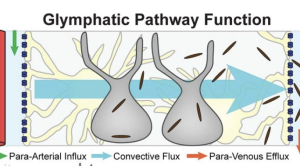In a retrospective cohort study, Qingwen Chen et al. (Qingyuan People’s Hospital; Guangdong Pharmaceutical University; South China Normal University, Guangzhou) published in CNS Neuroscience & Therapeutics, investigated the presence and temporal dynamics of glymphatic dysfunction in chronic-phase stroke using the diffusion tensor imaging along the perivascular space (DTI-ALPS) index. The study further aimed to correlate this dysfunction with domain-specific cognitive outcomes stratified by lesion topography.
The authors observed that glymphatic impairment — as measured by reduced ALPS indices — persisted up to one year after stroke, with asymmetry favoring more impairment in the lesioned hemisphere at 3 months, followed by partial recovery at 12 months. However, cognitive correlations (primarily in motor and memory domains) were weak, inconsistently significant, and vanished by one year. Neither lesion volume nor cortical vs subcortical location predicted ALPS values.
Critical Review
This study introduces a compelling premise — glymphatic dysfunction as a chronic, measurable consequence of ischemic stroke — but its translational value remains limited. The authors apply the DTI-ALPS metric longitudinally, which is methodologically novel, yet still lacks validation against gold-standard glymphatic tracers. As a surrogate marker, ALPS remains indirect, anatomically constrained, and highly sensitive to white matter tract orientation and noise.
